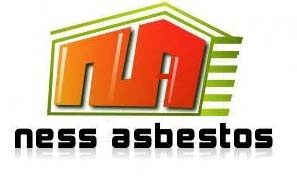The Control of Asbestos Regulations 2012
The new Control of Asbestos Regulations came into force on 6 April 2012.
The major changes are as follows: –
- Single Control Limit of 0.1 f/ml for work with all types of asbestos.
- Specific mandatory training for all trades liable to be exposed to asbestos.
- Fibre counting under new World Health Organisation (WHO) method, from European Reference Method (ERM).
- Deregulation of textured coatings
The Approved Codes of Practice ‘Work with asbestos insulation, asbestos coating and asbestos insulating board’ L28 (Fourth Edition) 2002, ‘Work with asbestos which does not normally require a license’ L27 (Fourth Edition) 2002, and ‘A guide to the Asbestos (Licensing) Regulations’ L11 have all been superseded by a new Approved Code of Practice ‘Work with materials containing asbestos’ L143. The management of asbestos in non-domestic premises – L127 2002, in relation to Regulation 4 will still be applicable.
The Duty to Manage
If you own, occupy, manage or have responsibilities for non-domestic premises, which may contain asbestos, you will either have:
- A legal duty to manage the risk from this material: or
- A duty to co-operate with whoever manages that risk. The person responsible for a building (The Duty Holder) is required to manage the risk from asbestos by:
- Taking reasonable steps to find asbestos on their premises and assess the condition of these materials;
- Presuming that materials do contain asbestos unless there is strong evidence that they do not;
- Preparing a record of the location and condition of asbestos, or presumed asbestos, materials and assess the risks from them;
- Preparing and implementing a plan to manage those risks; and
- Providing information on the location and condition of the materials to anyone who is liable to disturb them.
Who will be the Duty Holder?
All those who have responsibility for the maintenance and/or repair of non-domestic premises have duties under this regulation. The extent of the legal duty is determined by the terms of the tenancy agreement or contract that applies.
In the absence of any such agreement the Duty Holder will be determined by the degree of control the party has over the premises. Depending on the contract or tenancy, the Duty Holder could be the landlord or tenant or even a facilities manager. In some cases two or more parties could share the duty.
The regulation also includes a duty to co-operate, which applies widely. This will, for example, require a landlord to pass information on asbestos to a new tenant. Similarly a tenant must co-operate by allowing a landlord to gain access to a building, for example to carry out a survey. Also any building surveyor or architect who have plans which show information on the whereabouts of asbestos would be expected to make these available to the Duty Holder at a reasonable cost.
More detailed information can be found here regarding the asbestos regulations and your duty to manage.
